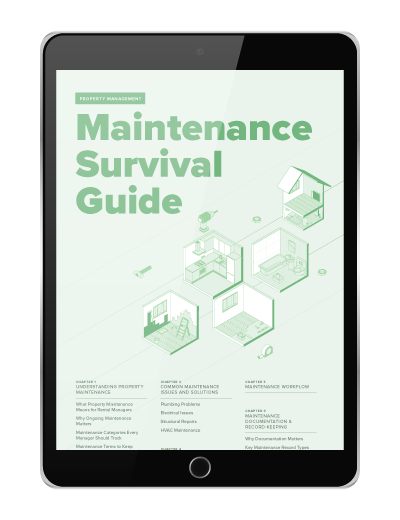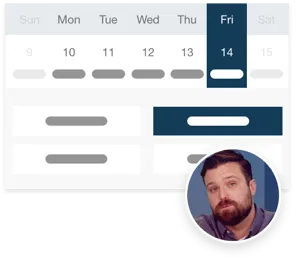Moving into a new rental property can be an exciting experience for tenants, but it can also be stressful. Coordinating the move, getting the keys, signing the lease, and making sure the unit is in good shape before move-in are all high priorities.
Start your free trial today!
Try Buildium for free for 14 days. No credit card needed.
Start Your TrialAs a property manager, it’s important to make the process as smooth and efficient as possible. A comprehensive move-in checklist can help you do that by making sure that all necessary tasks are completed and that the property is in tip-top condition for the new tenant.
What Is a Move-In Checklist?
A move-in checklist documents the steps that should be taken before a new tenant moves into the property. The checklist serves two purposes:
- As a record of inspection for the property that lists prior damage and documents repairs made
- As a list of tasks the property manager has to complete, such as handing over the keys, before a new tenant moves in
A move-in checklist protects all parties involved in renting the unit, and allows property managers to deliver a consistent move-in experience for all new tenants.
Why Is a Move-In Checklist Important?
There are four main reasons a move-in checklist is important:
- To Provide a Record: It provides a record of the condition of the property at the beginning of the tenancy. That record gives both the owner and the tenant a reference point for the condition of the unit when the tenant moves out. Property managers can look back at the move-in checklist to identify which damages occurred while the tenant lived there, as well as normal wear-and-tear.
The tenant can refer to their move-in checklist to document damage to the unit made before they moved in, so they are protected from unnecessary charges.
- To Provide a Reference for Maintenance: When your staff conducts a move-in inspection, they can use the list to identify repairs that should be made before the new tenant moves in. That might include replacing old carpeting, repainting walls, deep cleaning, updating appliances, or fixing broken fixtures.
- To Provide a Consistent Move-In Experience: Giving your staff a list of tasks to complete before moving day, ensures that every tenant has a positive experience from the very beginning—they have their keys and codes, they understand their lease, they know when trash day is, etc.
- To Comply with Local and State Laws: It’s also important to note that certain states require landlords to provide a move-in checklist to tenants when they move in, particularly if they require a security deposit. To determine whether your state requires a move-in checklist and what it has to include, check with a legal professional.
What Steps Should Be Included in a Move-In Checklist?
The specific steps that should be included in a move-in checklist will vary depending on the property and the landlord’s requirements, as well as state and local laws. So, be sure to check with a legal professional before creating and distributing your move-in checklist.
In general, a move-in checklist should include sections that cover inspection of all indoor and outdoor spaces that belong to the unit. Bedrooms, bathrooms, the kitchen, outdoor patios, even the front entryway should be accounted for. Each section should list specific features, furnishings, and appliances that are provided by the property owner.
Some common move-in checklist items include:
- Inspecting the property for any damage: This should include checking the walls, floors, ceilings, windows, doors, and appliances.
- Checking the condition of the appliances and fixtures: This should include testing the stove and exhaust vent, refrigerator, dishwasher, washer, and dryer.
- Testing the smoke and carbon monoxide detectors: This is important to comply with state and local laws and, above all, to make sure that the tenant is safe in the event of a fire or carbon monoxide leak.
- Repainting and deep cleaning the unit: This step is especially important if the previous tenant was a smoker or had pets.
- Checking electrical and plumbing: Look for degraded wiring or pipes, as well as malfunctioning electrical outlets or fixtures.
- Checking for and eliminating pests: Have a professional come in to treat the unit for common pests such as ants, mice, or termites.
- Checking fire extinguishers: Check the expiration dates on fire extinguishers and replace any that have expired.
Aside from property inspection tasks, it should include steps that help make move-in a smooth process for tenants, while complying with state and local laws. For example:
- Providing the tenant with keys and access codes: This should include keys to the front door, back door, and any other common areas.
- Explaining the terms of the lease agreement: This should include the rent amount, the security deposit, the due dates for rent payments, and the late fees.
- Collecting the first month’s rent and security deposit: This should be done before the tenant moves in.
- Providing the tenant with required documents: There may be documentation that your state or municipality requires you to provide to tenants before they move in. That can include an inspection checklist or a lead paint notice, among others.
For a move-in checklist template, click here.
How to Inspect a Rental Unit
Once you have your move-in checklist, it’s time to start checking off the boxes.
When inspecting the property for damage, it’s important to document the condition of the unit in detail. Take photos, videos, and written notes of anything damaged, worn, or not working. From the checklist, you can then create and assign maintenance tickets to take care of the issues you found in your inspection.
Property management software with built-in maintenance tools can help you do that easily and quickly. When your staff inspects a property, they can enter maintenance requests via mobile in real time. You can then assign and track each maintenance ticket through completion.
For maintenance your team conducts at every unit turnover, such as painting and deep cleaning, you can schedule and assign recurring tickets that will ping the right staff member automatically, leaving you with fewer tickets to assign.
Move-In Checklist Mistakes to Avoid
When managing move-ins, property managers often encounter several common pitfalls that can lead to disputes and complications.
Skipping the Details: When conducting a move-in inspection, document everything. Overlooking small issues such as small dents in the fridge door or a bit of unraveling carpet can escalate into major disputes later on.
Skipping Photos or Videos: Written descriptions can be subjective, and without visual proof, disagreements about damage to the property can become a big headache.
Letting Tenants Inspect the Unit: Tenants are not trained property managers and may miss those small details you shouldn’t skip. It’s best to have a professional, either from your team or a third party, go through your move-in checklist.
Skipping Signatures: Once your team has inspected the unit and handed off all materials and information to tenants, both your team and your tenant should sign the checklist to make sure everyone is on the same page.
Not Using Property Management Software: Your property management software can be your single source of truth for all checklists, inspections, and maintenance tasks. Staff, tenants, and owners can request maintenance and attach videos, photos, and related documents. And you can follow those requests through completion, communicating with your tenants and owners as they progress.
To learn more about how maintenance management software can help your team deliver a smooth turnover, check out Buildium. You can even sign up for a free 14-day trial to see for yourself.
Read more on Leasing

